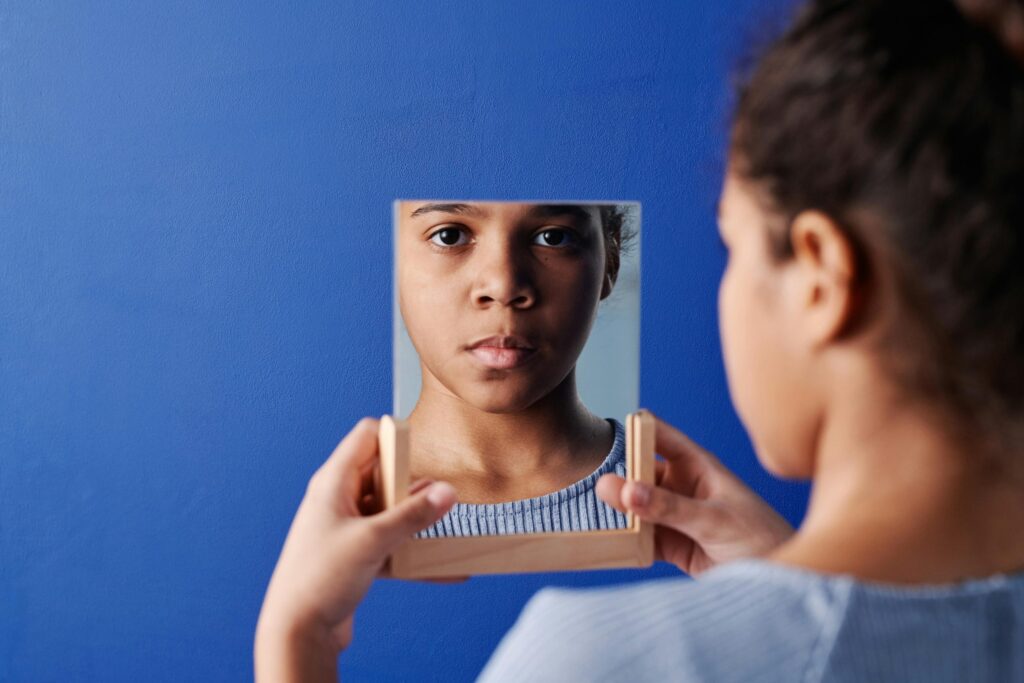Have you ever smiled and said, “I’m doing great, how are you?”—even when everything inside felt like it was falling apart? If so, you’ve experienced the pressure to mask your true feelings. In the context of mental health and substance use, masking is a way to avoid vulnerability, to hide our pain behind a smile, and to pretend everything is okay when it’s not. Over time, that mask becomes heavy, isolating, and exhausting.
This Mental Health Week (May 5–11), we stand with the Canadian Mental Health Association – National (CMHA) to support this year’s theme: Unmasking Mental Health.
Unmasking starts where we feel most vulnerable—at home. If we can’t feel psychologically safe in our own homes, how can we ever feel safe enough to open up outside—in our communities, workplaces, or schools?
What a Psychologically Safe Home Looks Like—And How to Build One
1. Acknowledge and Address Generational Trauma
Generational trauma refers to the emotional wounds passed down from one generation to the next. You don’t have to experience the original trauma firsthand to feel its effects. Think of it like an imprint, epigenetic change —your body remembers what your ancestors endured.
This trauma often stems from legacies of oppression, colonization, racism, and abuse. It can show up as emotional numbness, isolation, mistrust, or unhealthy coping mechanisms.
For many Black, Indigenous, and racialized communities, experiences of mistreatment by healthcare systems have made trust in those institutions fragile. The Canadian Journal of Psychiatry in their study “Racial/Ethnic Disparities in Psychiatric Traits and Diagnoses”, found that Black Canadians are disproportionately hospitalized for mental health concerns but are not likely to be referred to less intrusive community-based care.


2. Encourage Authentic Conversations
When therapy feels unfamiliar or out of reach, healing can still begin—through conversation. In some cultures, there may not be a word for “depression,” making it harder to name what one is going through. This lack of language—and the silence it can create—often becomes a barrier to expressing pain or seeking support.
One of our case managers, Devi Kirkham, sees this every day in her work:
Creating a safe space starts with listening. When we ask thoughtful questions and really listen to each other, that’s where trust grows.
It’s not about saying the perfect thing. It’s about being present, curious, and open. Real connection begins when we show up for each other—without judgment.
3. Integrate Culturally Relevant Practices
In many cultures, mental illness is misunderstood—viewed as weakness or failure. A 2020 BMC public health meta-analysis on“Stigma for common mental disorders in racial minorities and majorities” revealed stigma as a leading reason why racialized Canadians avoid mental health care. That’s why culturally relevant care matters. It affirms identity. It honors tradition. It feels like home.
Case manager Ana De Garcia puts it simply:
A culturally responsive approach recognizes how systemic forces—like racism, poverty, and homophobia—shape mental health. It meets people where they are, not where the system expects them to be.
For some, that healing might come through sacred rituals, guidance from elders, or community ceremonies. In South Asian households, prayer or puja may offer comfort that clinical models don’t. In East Asian traditions, emotional wellbeing is often linked to physical balance making acupuncture or herbal medicine deeply restorative.
These practices aren’t “alternative”, rather they are authentic, rooted, and powerful.

4. Make Professional Help Accessible
Cultural stigma, language barriers, financial hardship, and systemic discrimination often create invisible walls around care. While psychiatry is covered under OHIP, most therapy isn’t—placing it out of reach for many, especially racialized individuals in low-wage or precarious jobs.
But race is only part of the picture. When race intersects with gender, immigration status, sexual orientation, or disability, the barriers grow steeper. A 2023 CBC report titled “Racialized women face significant barriers when seeking mental health care”, revealed that for many racialized women, cultural stigma was the leading reason for not seeking help—but financial hardship came a close second. The report highlighted how some women delayed or avoided care altogether due to the cost of therapy and the lack of culturally competent providers.
And for queer and trans individuals within these communities, the experience is even more complex. They may encounter mental health systems that lack both racial and LGBTQ2S+ competency, leading to care that feels alienating, dismissive, or even retraumatizing.

This is why low-barrier, community-rooted services matter. It’s not enough to make therapy available, it must also be accessible, affordable, and culturally safe.
At Across Boundaries, we work to close this gap by offering:
- Free, culturally responsive mental health services
- Multilingual staff who reflect and understand the lived realities of our communities
- Tailored workshops, outreach, and family counseling
- We center care on lived experience and understanding of discrimination and oppression.
But there’s more work to be done. We can’t do it alone. Whether you donate, refer a loved one, or simply start a conversation—you are helping us build a more equitable, compassionate, and trauma-informed community.
Mental health care should never be a luxury.




